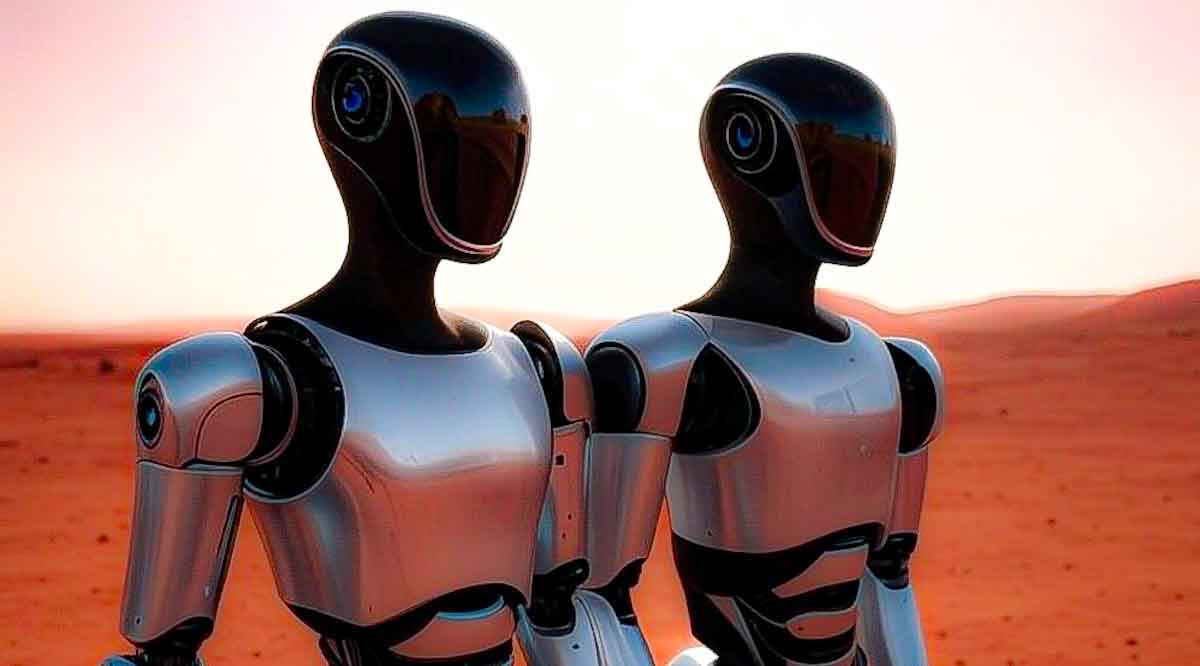Elon Musk has shared exciting details about SpaceX’s upcoming plans to launch Starships to Mars by 2026. This ambitious mission will not only showcase the capabilities of SpaceX’s spacecraft but also introduce two groundbreaking technologies—Optimus robots and Grok.
BREAKING:
Elon Musk said
“If all goes well, SpaceX will send Starships to Mars with Optimus robots and Grok (in 2026). pic.twitter.com/QWTJL5XOwW— Tesla Owners Silicon Valley (@teslaownersSV) February 18, 2025
If all goes as planned, these innovations could reshape the way we approach interplanetary exploration and create a new era of artificial intelligence (AI) and robotics. Let’s delve into the potential of Musk’s vision for Mars exploration and what these technologies bring to the table.
SpaceX Starships: A Giant Leap for Mankind
For those familiar with Musk’s work at SpaceX, the goal of colonizing Mars has been at the forefront of his ambitions for over a decade. The Starship program represents the centerpiece of this mission.
The Starship spacecraft is designed to be a fully reusable vehicle capable of carrying both crew and cargo to the Red Planet and beyond. With its massive size, the Starship is touted as the most powerful spacecraft ever built, capable of lifting payloads into orbit with ease.
SpaceX’s Starship is crucial for the future of interplanetary travel due to its potential for reusability, cost-effectiveness, and capacity. Musk has repeatedly emphasized that the key to making Mars colonization feasible is reducing the cost of space travel.
Starship’s reusability ensures that every mission won’t require building a new rocket, and this could drastically lower the financial barrier to space exploration.
While SpaceX has already demonstrated successful launches of Starship prototypes, Musk’s latest statement adds a new dimension to this ambitious project.
By 2026, Musk envisions Starships not only reaching Mars but being accompanied by the next-generation of autonomous robots and advanced AI systems, taking space exploration to a new level.
Optimus Robots: Space Travel’s New Crew Members
One of the most exciting aspects of Musk’s vision is the introduction of Optimus, an AI-driven humanoid robot. The Optimus robot, which has already been a topic of much discussion at Tesla and SpaceX, is designed to perform tasks traditionally done by humans.
Musk has indicated that Optimus will be an integral part of the Mars missions, assisting with everything from daily operations to complex tasks that may be too dangerous for human astronauts.
The robot’s potential lies in its ability to function autonomously in environments that are far from Earth-like, such as the Martian surface. Optimus is equipped with advanced sensors, AI capabilities, and the ability to learn from its surroundings.
These robots could perform maintenance on the Starship, set up habitats, mine resources, and handle a variety of logistical needs that arise during the colonization process. With Mars’ harsh environment, having robots like Optimus will be essential for the success of the mission and the safety of human astronauts.
Optimus robots could also play a critical role in addressing one of the greatest challenges of space exploration: the long duration of missions. With their ability to function independently, robots could help ease the burden on astronauts by taking on essential tasks, thus allowing humans to focus on more complex and creative aspects of the mission.
Grok: A New AI Era
Musk’s statement also touched on Grok, the next-generation AI designed to assist with decision-making and mission control. While details about Grok are still limited, it’s clear that this AI system will be far more advanced than anything we have seen before.
Musk has previously discussed the idea of AI systems capable of real-time problem-solving and adaptation, and Grok seems poised to be a key player in the Mars mission’s success.
Grok’s role will likely involve real-time data analysis, managing spacecraft systems, and helping with navigation, resource management, and communication.
The AI will be able to make decisions on the fly, reducing the reliance on Earth-based teams and allowing for faster response times in critical situations. For astronauts on Mars, Grok could serve as a highly efficient and intelligent assistant, optimizing everything from life support systems to mission strategy.
The integration of AI like Grok into Mars missions could change the way future space expeditions are managed. Instead of relying solely on human intuition or pre-programmed protocols, Grok will bring a dynamic problem-solving ability that could make deep space exploration more adaptable and efficient.
The Road Ahead: A Bold Vision
While Musk’s vision for Mars in 2026 may seem ambitious, it’s important to recognize that SpaceX has already made extraordinary strides in the field of space exploration.
The Falcon rockets, the Starship prototypes, and the successful crewed missions to the International Space Station (ISS) are testament to the company’s growing expertise in space technology.
However, the challenge of sending humans to Mars and establishing a sustainable colony on the Red Planet is far greater than anything SpaceX has attempted before. It requires not only technological advancements but also international collaboration, careful planning, and overcoming unpredictable obstacles.
Optimus robots and Grok will undoubtedly be pivotal in addressing these challenges, making human exploration of Mars a realistic and achievable goal.
Musk’s statement has injected new excitement and urgency into the space exploration community, reminding us of the power of innovation and the drive to reach beyond Earth’s boundaries. If all goes well, 2026 could mark a historic milestone in humanity’s journey to the stars.
